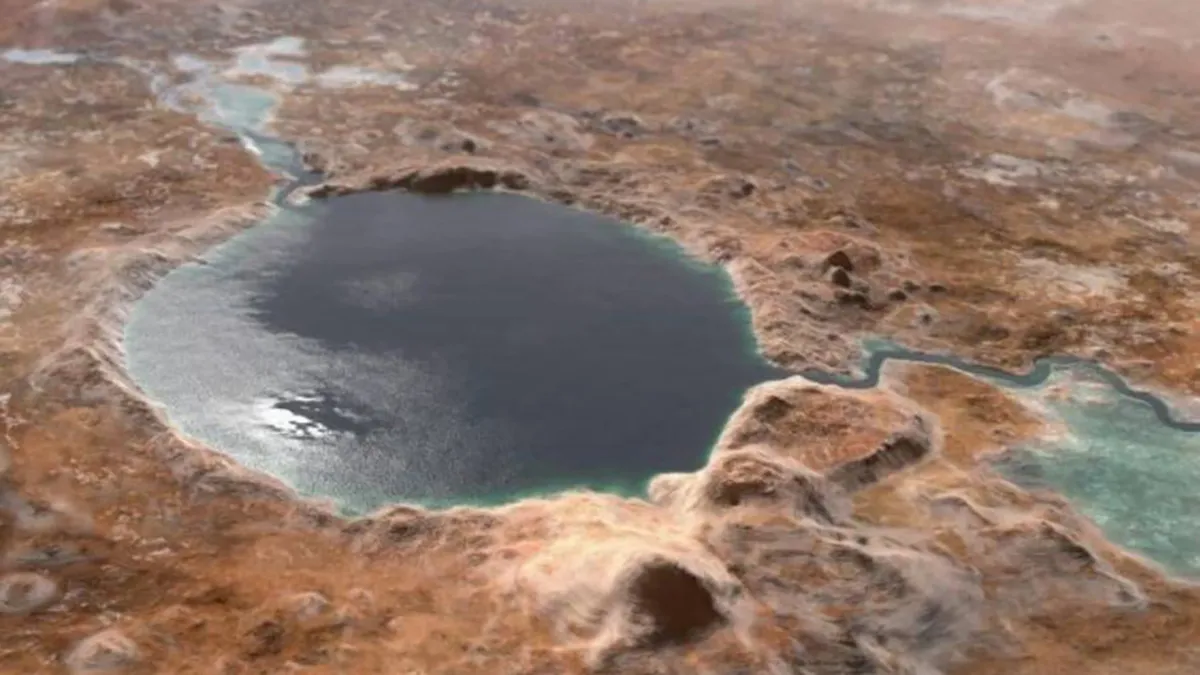Humans remain endlessly fascinated by Mars. Still, notwithstanding Elon Musk’s grand dreams, our Red Planet neighbour currently remains a planet inhabited entirely by robots.
Still, those robots are continuing to expand our knowledge of Mars. Including what were once its bodies of open water.
Since landing on Mars in early 2021, the Perseverance rover has spent three years exploring the impact crater named Jezero. Twenty-eight miles wide, Jezero was formed by an asteroid impact in the early days of the Solar System, nearly four billion years ago.
While exploring the site and searching for samples, Perseverance found evidence that the sprawling crater was actually once a lake.
“We picked Jezero Crater as a landing site because orbital imagery showed a delta – clear evidence that a large lake once filled the crater,” said Ken Farley, Perseverance’s project scientist, in a press release from NASA. “A lake is a potentially habitable environment, and delta rocks are a great environment for entombing signs of ancient life as fossils in the geologic record.”
Farley continued, “After thorough exploration, we’ve pieced together the crater’s geologic history, charting its lake and river phase from beginning to end.”
Scientists were able to put together a detailed timeline of the lake’s history, which is separated into three distinct periods.
The real source of the continuing fascination with Mars is, of course, the undying conviction that the planet is (or was) home to extraterrestrial life. Hence, references to the possibility of Perseverance finding life are peppered through the reporting… however spuriously.
In the first period, fine sand and mud known for preserving fossil life made its way into the crater.
That may be so, but there’s no evidence that there were or are any fossils for it to preserve.
Next, sedimentary layers formed as the lake expanded, stretching 22 miles across and reaching depths of 100 feet. Finally, “high-energy rivers” formed that carried boulders across the surface of Mars.
“We were able to see a broad outline of these chapters in Jezero’s history in orbital images, but it required getting up close with Perseverance to really understand the timeline in detail,” said Libby Ives, a post-doctoral fellow at NASA’s Jet Propulsion Laboratory […]
Perseverance has also determined the crater floor is made up of igneous rock formed from magma or volcanic activity underground. Above the igneous rock, there are layers of sandstone and mudstone, indicators of the formation of the rivers that flowed into the lake. The mudstone is also rich in salt, indicating that the lake experienced evaporation […]
During its 1,000 days on Mars, the Perseverance rover has collected 23 rock samples from the crater. The robot bores into the ground and removes a chunk of rock about the size of a stick of chalk. It then stores the sample in a specially-made metal tube.
Yet again, spurious references to life on Mars are dangled in front of the gullible.
Some of these samples have contained signs that the lake may have been home to microbial life, according to NASA.
Except that they really don’t.
Perseverance has collected two samples to date that possibly indicate ancient life on Mars. One sample contained a notable amount of silica, which preserves fossils here on Earth. And a second sample showed a large quantity of phosphate, which is a critical building block in life on Earth. It is a component of DNA and is found in cell membranes.
To claim that those may be signs of microbial life is about as long a reach as claiming that finding a cracked glass bead is a sure sign that you’re about to uncover the lost Amber Room of the Catherine Palace.
Because, as the scientists concede, they’ve yet to find any actual evidence of life at all.
The rover is able to determine the make-up of the rock using the specialized instruments it’s fitted with. These tools are capable of detecting both microscopic fossil-like structures and chemical changes left behind by ancient microbes, but so far it hasn’t recorded either of these signs of life.
Still, NASA scientists remain hopeful that the evidence is out there.
All That’s Interesting
Of course they are. Not least because keeping the public fascination with Life on Mars alive is one way to keep the funding rolling in.









